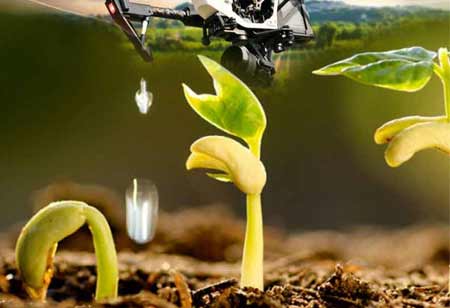Thank you for Subscribing to Agri Business Review Weekly Brief
Reasons Behind City-Greening
Spending time in nature is fine for our well-being. Being close to nature can support you feel less worried or anxious.

By
Agri Business Review | Thursday, September 08, 2022
Stay ahead of the industry with exclusive feature stories on the top companies, expert insights and the latest news delivered straight to your inbox. Subscribe today.
Bringing greenery into our cities through green roofs, walls, or pocket parks, helps support biodiversity.
FREMONT, CA: Here are the Advantages Of City-Greening
1. It makes us happy!
Spending time in nature is fine for our well-being. Being close to nature can support you feel less worried or anxious, experience positive emotions, and improving your mental well-being. Since half the universal population lives in cities, building sustainable and healthy places is more important than ever.
2. It's good for wildlife
Bringing greenery into our cities through green roofs, walls, or pocket parks, helps support biodiversity. We've experienced this: where we work in Paddington, a green space on the working campus hosts an abundance of wildlife, like insects and birds.
Another great instance is the Natural History Museum garden, in which over 3,300 species have been identified as it opened 25 years ago, many of which have contributed to scientific studies. Green spaces for wildlife don't seem essential to be big; even a single plant can serve as a stepping stone as several small but powerful creatures navigate a concrete jungle.
3. In the fight against climate change, it's a future-proofing measure
The correct amount of tree cover in cities can decrease temperatures by 10 degrees Fahrenheit! Shading homes and streets break up urban 'heat islands' (caused by the heat generated by houses, shops, industrial buildings, vehicles, and people nearby) and trees also release water vapor through their leaves. As we experience hotter summers, these benefits will be progressively important.
Increased extreme weather events will also incorporate heavier, more frequent rainfalls. Green spaces can support expected increases in heavy downpours to evade flooding. Sustainable drainage (often noted as SuDS) includes nature-based solutions to slow the rate at which stormwater enters piped drainage systems, including rain gardens and street trees.
Turning grey, impervious surfaces into green, permeable ones decreases the risk of flash flooding, as some water can drain into the ground instead of running over it.
4. It can help endorse our food system
City-Greening can also signify growing food! While this won't replace large-scale farming, growing this way can help us reconnect with food and shorten supply chains for certain products. Private gardens, community gardens, allotments, & urban farms all have a function to play in building a more resilient food system.
Currently, 84% of fruit and 46% of vegetables consumed in the UK are imported, so growing in towns and cities can only enhance our resilience to any shocks in the supply system. Vertical and indoor growing is also more resilient to pests and extreme weather, and the conditions are much simple to control than out in a field.
5. It can reduce air pollution
Now considered the greatest global environmental health threat by the World Health Organisation, green spaces can play a role in tackling this issue. Plants can enhance air quality through good old photosynthesis! They absorb damaging gases and produce clean oxygen.
A bonus is that plants deflect radiation from the sun, meaning that leaves soften the rays and reduce UV exposure, decreasing eye and skin damage and dehydration from overexposure. It's a win-win.





